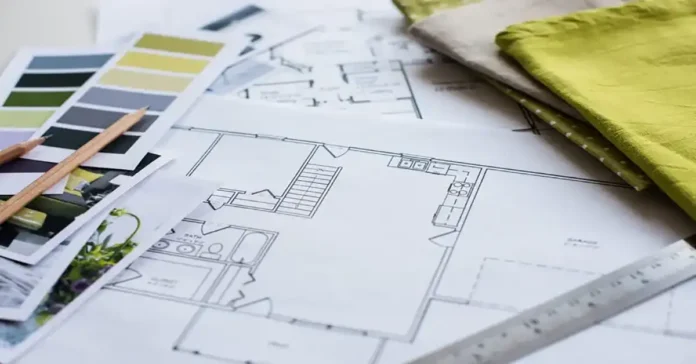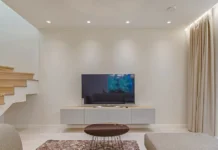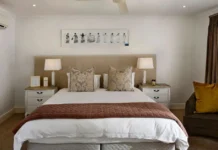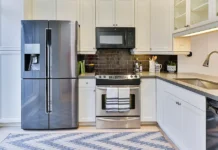When it comes to designing your home, understanding different interior design styles can help you create a space that truly reflects your personality. Each style offers unique characteristics and appeals to different tastes, making it essential to explore your options. From the sleek lines of modern design to the warm textures of rustic charm, there’s a style for every preference. Modern design focuses on minimalism and functionality, using clean lines and neutral colors. It’s perfect for those who appreciate a clutter-free and contemporary look.
On the other hand, traditional design brings classic elegance with rich colors and detailed furnishings, ideal for creating a timeless and sophisticated space. For a cozy, lived-in feel, consider farmhouse design, which combines comfort with a touch of rustic charm. Industrial design, with its raw materials and urban vibe, suits those who enjoy an edgy and modern aesthetic.
Each style has its own set of principles and elements, allowing you to mix and match or choose one that resonates most with you. By exploring these top interior design styles, you can make informed decisions and craft a home that’s not only beautiful but also uniquely yours.
Types of Interior Design Styles
There are several types of interior design styles that cater to different tastes and preferences. Modern design focuses on clean lines, neutral colors, and minimalism. Traditional design brings in classic elegance with rich textures, ornate details, and timeless appeal. Rustic or farmhouse design emphasizes natural materials like wood and stone for a cozy, country feel. Industrial design showcases exposed brick, metal accents, and a raw, urban vibe.
For a more eclectic look, bohemian design uses vibrant colors, patterns, and an unconventional mix of furniture. Each style has its unique elements, allowing you to choose the one that fits your personality and the vibe you want in your home.
1. Traditional Interior Design Style
Heritage is the foundation of traditional interior design. The past must be preserved above everything. Antiques and old stuff abound in the rooms.
The main goal of traditional interior design is to honour the past. By using old styles and decorating concepts from bygone eras, it aims to preserve the past.
Historical references and customary patterns serve as the foundation for traditional interior design. These consist of things like fabrics, carpets, and wall coverings. Older European nations are frequently thought of while discussing the traditional interior design style.
Traditional Interior Design Style is a popular choice for many Interior Design Projects, offering a timeless aesthetic that blends classic and contemporary elements.
2. Industrial Interior Design Style
Making things happen is the focus of industrial interior design. It involves conveying a sense of motion and vitality. The spaces are intended to promote innovation and productivity.
Steel, concrete, and other industrial materials are the primary design elements. There is frequently a lot of machinery, tools, and equipment in the rooms. They could even include workspaces like studios or workshops. Interiors with an industrial aesthetic are all about embracing technology. They emphasise integrating contemporary comforts into daily living.
The focus of industrial interior design is technological acceptance. Work is what industrial interior design is all about. The functional spaces serve a purpose and are useful. It is based on the idea that technology can simplify our lives. The rooms are ergonomically and comfortably constructed.
Industrial Interior Design Style is a trendy option for modern Interior Design Projects, featuring exposed brick walls, metal accents, and a raw, minimalist feel.
3. Rustic Interior Design Style
Natural elements including wood, brick, concrete, and glass, as well as rough stone walls and wooden beams, define the rustic interior design aesthetic sense. For those seeking something distinctive and distinctively different, this design is ideal. Here are some suggestions to get you started if you are thinking of incorporating some rustic aspects into your house:
- Utilize organic materials
Natural building materials may give your house charm. A few examples are wooden beams, bricks, stones, and even concrete. These materials are frequently utilised since they are simple to use and do not need much upkeep.
- Incorporate Vibrant Colours
Any area comes to life with colour. Colour has the power to enlarge, brighten, and warm space. Consider painting a wall a vivid colour, such as purple, blue, green, yellow, or orange. Alternately, you might whiten the ceiling to provide light to a dim space.
- Use your furniture to provide texture.
Furniture gets depth and intrigue by adding texture. Try covering a sofa with a throw blanket or putting a rug over a hardwood floor, for instance.
4. Farmhouse Interior Design Style
Farmhouses are renowned for being warm, inviting places where guests feel at ease. Families will love this type of home design since it provides lots of space for everyone to enjoy. Make sure to use natural materials like wood, stone, and plants in your décor while constructing farmhouse interiors. Use even old artefacts to give the space personality.
Bringing nature indoors is central to farmhouse interior design. It is incredibly natural and rustic.
Farmhouse Interior Design Style is a charming and cozy choice for Interior Design Projects, with rustic accents, warm color palettes, and a comfortable, homey feel.
5. Modern Interior Design Style
Modern interior design comes in a wide variety of styles, each with its own distinctive features.
Bright colours, straightforward forms, and clear lines are hallmarks of 20th-century modern home design. Although the rooms are frequently large and open plan, they can sometimes be cosy and compact. The flooring is normally built of wood or stone, while the walls are typically white or light grey.
The focus of the modern interior design is utility. The objective is to provide a welcoming atmosphere. The interiors should have ample lighting and simple furniture. The goal is to provide a sense of balance and openness.
Modern interior design frequently employs gentle, organic colours like milk, brown, and sage green. Typically, the rooms are smaller than traditional ones, so it is common to see lots of windows and skylights. The floors are usually hardwood or tile, and the walls are painted in neutral shades like taupe, tan, or ivory.
Modern Interior Design Style is a sleek and minimalist option for Interior Design Projects, featuring clean lines, neutral color schemes, and a focus on functionality and simplicity.
6. Minimalist Interior Design Style
Eliminating all extraneous items is at the heart of minimalism. Clutter, extra furniture, and other items that do not enhance the purpose or value of the space must be removed.
Using only what is essential is a key component of minimalist home design. Nothing should be unnecessary, and everything must have a purpose. The furniture is kept to a minimum and the rooms are furnished only with what is necessary. It involves getting rid of anything that occupies space but offers no advantage.
Although stark minimalism is the hallmark of minimalist interior design, there are various variants of this theme. For instance, some minimalist rooms include striking textures and geometric patterns. Others have things that are more natural, like artwork and flora.
7. Contemporary Interior Design Style
Innovation is the key to modern interior design. It emphasises exceeding limits and disobeying regulations. Being imaginative is key in modern home design. It challenges you to think creatively and defy expectations. There is space for everything because the rooms are large and open. There is typically a lot of natural light in the rooms because of how open they are.
The focus of the contemporary home design is simplicity. It promotes structure and order. The spaces are tidy and clutter-free.
In contemporary home design, simplicity is key. Its foundation is the maxim “less is more.” The rooms are clean and well-organized, and they have basic furniture.
8. Transitional Interior Design Style
Old and contemporary elements are combined in transitional interior design. It mixes traditional components from earlier times with current developments. It combines both traditional and modern design elements.
Traditional and contemporary features are combined in transitional interior design. Antique and contemporary furnishings are mixed in the rooms. Some rooms could have elaborate embellishments, while others might seem modern and minimalist.
It is both traditional and contemporary. Combining components from many eras is the focus of this style of home design.
9. Eclectic Interior Design Style
The key to eclectic home design is combining many styles. Finding methods to merge many styles into something original is the goal, not simply mixing diverse styles.
There is eclectic home design everywhere. It is not defined by any one style. Instead, it consists of a variety of genres mixed to form a coherent whole. The focus of this style is enjoyment. Compared to other interior design styles, it is less serious.
The emphasis of eclectic home design is on having fun. In contrast to most other styles, it is more relaxed. There is no need to stress over adhering to rigid rules.
10. Shabby Chic Interior Design Style
It is all about embracing your inner sophistication when it comes to shabby chic interior design. It is about making a welcoming space where you can unwind and have fun.
The main goal of shabby chic home design is to inject personality and charm. It is comfortable and endearing.
Simple furniture, natural materials, and antique touches are common elements of this design style. Chandeliers, lamps, mirrors, and artwork from the past are employed to give spaces personality. Ruffles, lace, and floral prints are additional components.
11. Boho Interior Design Style
Being free-spirited is central to bohemian home design. It is a laid-back, informal way of living.
The bohemian home design aesthetic is all about being spontaneous. It emphasises how crucial living freely is. The layout of the rooms is intended to make you feel at home. It is vibrant, creative, and fun.
Bold colours, organic materials, and quirky furnishings are characteristics of this design aesthetic.
12. Coastal Interior Design Style
The focus of coastal interior design is bringing nature within. It highlights the interdependence between people and the natural world. The absence of artificial components gives the spaces a feeling of freshness and cleanliness. Interior decorating for coastal homes is all about getting away to the beach. It is calm and laid back.
The Mediterranean area had an impact on the development of the coastal design style in the late 19th century. Warm hues like red, orange, yellow, green, blue, brown, and black are used in this design. Natural materials including wood, stone, brick, tile, glass, and metal are frequently used in this design. Rugs or carpets are frequently placed on the floors, and the furniture is frequently painted white.
Large windows are frequently found in coastal interiors. There are several light sources, and the rooms are frequently open plans. Living rooms, dining rooms, kitchens, laundries, bedrooms, offices, and entryways are a few examples of this sort of space.
13. Art Deco Interior Design Style
In the 1920s, the art deco style first appeared. The phrase “art nouveau” which evolved to imply “modern art” is whence it gets its name. This movement got its start in France and quickly expanded to America and Europe. Architecture and fashion were significantly impacted by the style.
Geometric designs and vivid colours were popular in the Art Deco era. They frequently used substances like marble, glass, chrome, and leather. Clean lines and basic curves served as the foundation for their furniture designs.
The main goal of art deco interior design is to celebrate beauty. It draws inspiration from 1920s and 1930s art and design.
The appreciation of beauty is central to art deco home design. It is predicated on the notion that beautiful things need to be used frequently. Furniture and ornamental accessories are used to embellish the spaces.
14. French Country Interior Design Style
The key to French country home design is simplicity. It is sophisticated and elegant.
French Provincial, Chateau, and Louis XVI styles were the three principal types of architecture used in France. Small rooms with low ceilings and wood panelling typified the French Provincial design. Large rooms with soaring ceilings and elaborate mouldings were common features of the chateau style. Like the French Provincial style, the Louis XVI style also included certain ornamental additions like gilded mirrors and crystal chandeliers.
In modern and classic homes today, you may discover instances of French Country design.
And finally,
15. Eco-Friendly Interior Design Style
It is crucial to strike a balance between environmental concerns and human requirements while designing an eco-friendly space. Sustainable design principles and materials were used to create the rooms.
The eco-friendly home design emphasises sustainable living. It is concerned with ensuring that we save resources and safeguard the environment. The rooms were created with the environment in mind. They are constructed using sustainable materials.
Conclusion
In conclusion, understanding the various types of interior design styles helps you create a space that genuinely reflects your personal taste and lifestyle. Whether you gravitate towards the sleek lines of modern design, the classic charm of traditional decor, the cozy warmth of rustic styles, or the bold statements of industrial and bohemian aesthetics, there’s a style that’s perfect for you. By exploring and selecting the right design, you can transform your home into a harmonious and inviting environment. Embrace the style that resonates with you and enjoy a space that feels uniquely your own.
FAQs
A: The most popular interior design styles include Modern, Contemporary, Traditional, Industrial, Bohemian, Minimalist, Scandinavian, Farmhouse, Coastal, and Rustic.
A: Choose a style that reflects your personal preferences and complements your home’s architecture. Consider factors such as color schemes, furniture, and overall ambiance.
A: Modern design refers to a specific historical period characterized by clean lines, minimalism, and natural materials. Contemporary design, on the other hand, is ever-changing and reflects current trends, often incorporating elements from various styles.
A: Minimalist interior design focuses on simplicity, functionality, and a clutter-free environment. This includes neutral color palettes, clean lines, open spaces, and decor only.
A: Use a mix of vibrant colors, eclectic patterns, and a variety of textures. Layer rugs, hang tapestries, and include a variety of plants and vintage finds to create a relaxed, artistic atmosphere.
A: Scandinavian design is characterized by its simplicity, functionality, and connection to nature. It features light color palettes, natural materials, clean lines, and an emphasis on creating cozy and inviting spaces.
A: Farmhouse design emphasizes rustic charm and warmth. Main elements include wooden beams, distressed furniture, shiplap walls, and a mix of vintage and modern elements.
Q8: How can I achieve an Industrial design look?
A: Use large, open spaces with minimal decor, and include elements like industrial lighting and reclaimed furniture.
A: Coastal interior design evokes a relaxed, beach-inspired vibe. It features light, airy colors, natural textures like wicker and rattan, and ocean-inspired decor such as seashells, driftwood, and nautical elements.
A: Yes, mixing different interior design styles can create a unique and personalized look. The key is to ensure that the styles complement each other and maintain a cohesive color scheme.







